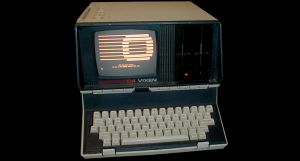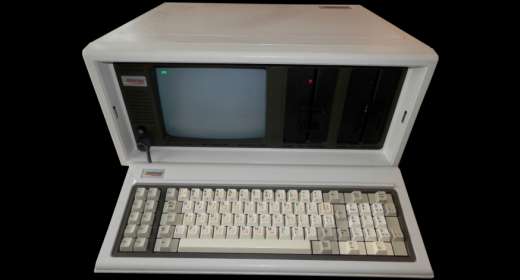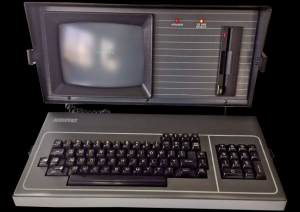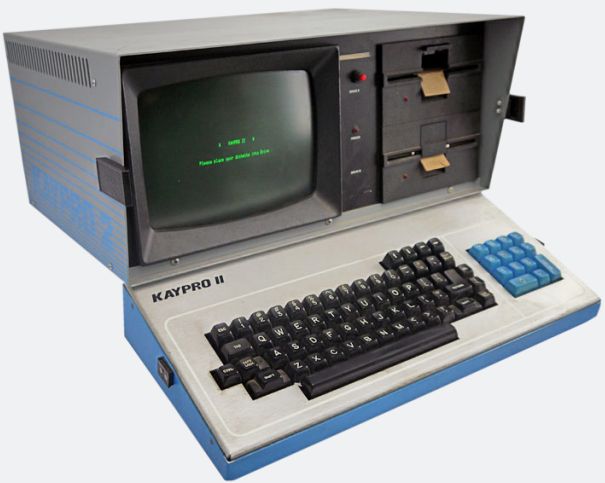
The Kaypro II was a more modern looking computer even though it came out in 1982. The Kaypro company was founded by Andy Kay and under the name of Non-Linear Systems. The Kaypro II was the first computer made totally of metal. It was designed to be portable. It weighed 29 pounds ( 13 Kilograms ) and was close to the same weight as the plastic personal computers of the day. The competition to the Kaypro II was from Osborne, but thanks to the popularity of the Kaypro II, Osborne fell by the wayside. Of peculiar note was that the name was changed from “Kaypro II” to “Kaypro 2” because of a confusion of the Roman numerals. It led people to believe it was the Arabic numeral 11.
Timeline for the Kaypro portables.
– 1982 – Kaypro II released. No graphic features, displays 80 x 24
characters. Two single-sided / double-density full-height
5.25 disk-drives (190k each).
– 1984 – Kaypro 2 (referred as Kaypro 2’84) is introduced. It has
two SS/DD half-height floppy drives, a Z-80A running at 4.0 MHz, 2
serial ports and rudimentary graphics (through graphic characters).
– 1984 – Kaypro 2X is released. Similar to Kaypro 2’84
but with DS/DD half-height drives.
– 1984 – Kaypro II Plus 88 released in order to be compatible with IBM software. It is a special version with an Intel 8088 CPU instead of the Z80A.
– 1985 – Kaypro New 2 is released. It is basically an
old 2X motherboard, with one or two DS/DD floppy drives, no 300 baud
modem previously found on the 2X. It comes with just CP/M and Wordstar
for software.
– 1985 – Kaypro 2X released. A renamed Kaypro 4’84 also sometimes also known as the Kaypro 2X MTC.
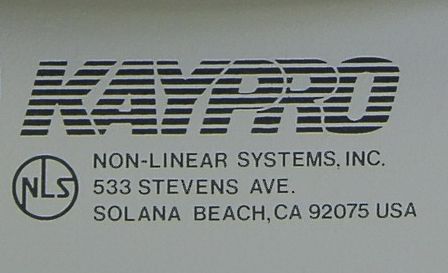
The Kaypro II did not have the same 6502 processor as some of its adversaries. It came with a Zilog Z80 microprocessor that outrun them by at least 100 percent. It was a 2.5 megahertz “powerhouse” of its day. It was packaged with 64 kilobytes of random access memory ( RAM ) and two slots for 5.25 inch double density floppy disks. The boxy enclosure contained everything in one package. One end of the case folded open or closed to reveal the keyboard and number pad. The monitor was stuffed into the case and two floppy disk slots were there to next to it. The monitor itself was tiny compared to an Apple IIe. It was just nine inches in diameter but it beat the Osborne’s screen by four inches. The monitor did not support color, but did support plenty of text. The truth was, it was just a phosphor screen, similar to those used for oscilloscopes. The resolution was 24 by 80 and supported text only. One serial port and one parallel port handled external connections.
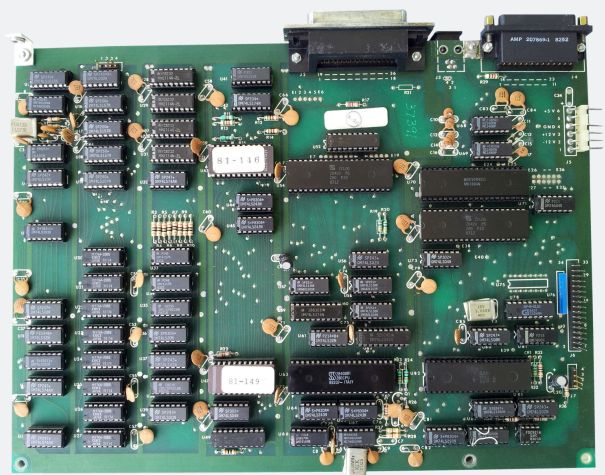
The Kaypro II was given a colorful paint scheme. Its aluminum exterior was painted with blue stripes with the words “Kaypro II” written bold letters. The exterior dimensions were 18 inches by 18 inches by 15.5 inches. The total size was just right to carry around with the included strap, but the corners of the computer would be sharp if they hit the knees. The Kaypro II looked like test equipment for a reason. Andy Kay was also the inventor of the digital multimeter. It was natural that his computer would have this boxy “test equipment” look to it. The operating system that ran the Kaypro II was called CP/M. It was made by Digital Research. It came with third-party application software such as PerfectWriter and PerfectCalc, which would later be replaced by MicroPro’s WordStar and CalcStar.
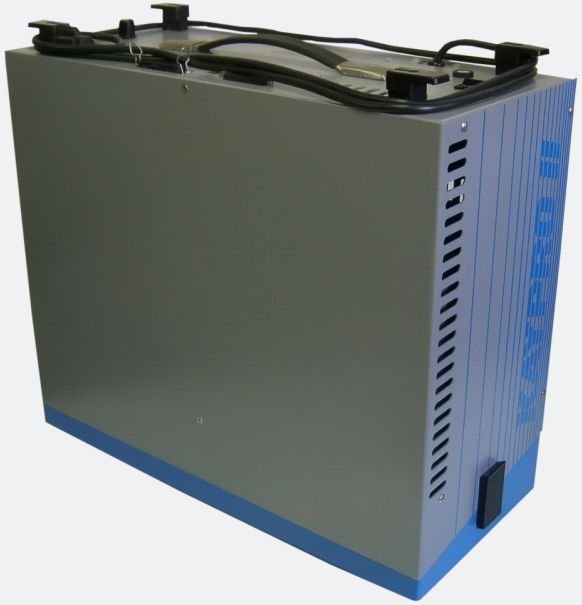
Kaypro started out selling the Kaypro II for $1795 and then dropped the price by $200 dollars the next year. In the Summer of 1983 the company was selling 10,000 units a month and blew their closest competition, Osborne, out of the water. But not long afterward, in the late 1980s, they could not keep up with the personal computers running MS-DOS. By the time 1990 arrived the Kaypro company was forced into bankruptcy. Andy Kay would come back a little later in the 21st century, but his efforts fizzled again.
The Kaypro II portable computer isn’t difficult to find so prices for them aren’t that high. Still, they occupy an important place in portable computing history so I’m sure prices will rise over time. In excellent working condition they sell for $100.00 to $200.00.
